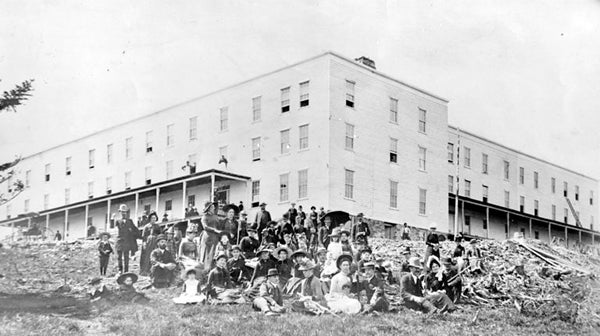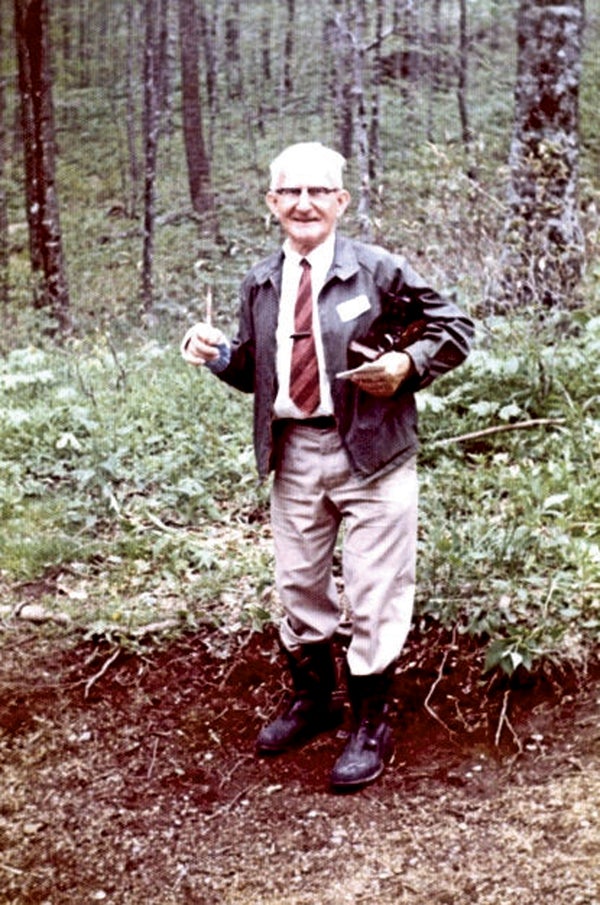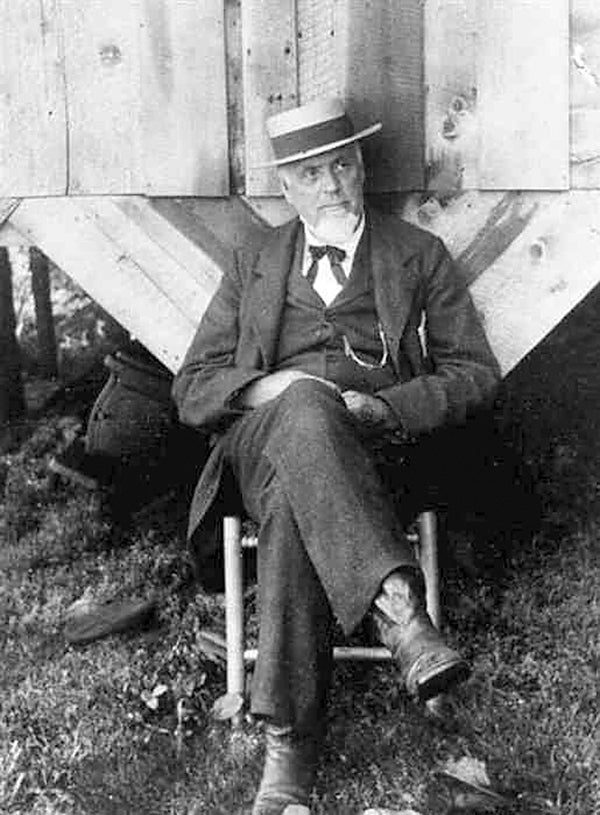The Roan is a story of beauty as well as a mystery choir
Published 12:08 pm Friday, July 9, 2021
|
Getting your Trinity Audio player ready...
|
BY ROZELLA HARDIN
Editorial Director
rozella.hardin@elizabehton.com
Fred Behrend, former STAR Editor, was among my first mentors when I began working at the STAR. Freddy, as we affectionately knew him, enjoyed hiking and his favorite place to hike was Roan Mountain. It was not unusual for Freddy on a beautiful spring or summer afternoon tell Editor Bill Jenkins, “I’m going to take four hours vacation time this afternoon and do some hiking on the Roan.”
One of his favorite stories is an old tale worth re-telling from time to time. In one of his writings Freddy tells about the phenomena known as “The Ghostly Choir of Roan Mountain,” which is also known as the angels of Roan Mountain. Still others refer to it as the “Devil’s Choir of Roan Mountain.”
Legend has it that the ghostly music has been heard on Roan Mountain long before the white man has been in this county. The Catawba tribe was said to challenge the other tribes in the area to battles that were so bloody and gory that the rhododendron on the edge of the Roan Bald bloom red.
There seems to be some difference on what the music sounds like. Some people claim it’s the sound of angels rehearsing singing for the end of time.
Some believe that the song is merely the rushing sound of a natural wind, magnified by the configuration of rocks on Roan Mountain. However, the wind on Roan Mountain is anything but normal.
To others, the music is almost haunting. Still, others believe the sound is horrible, like an animal howling.
Legend has it that one brave soul set out to find the origin of the music, only to fall and be knocked out. During this time the boy dreamed of a horrid choir of ghosts, ghouls, and demons floating in the air singing to him.
According to a story told by Randy Russell and Janet Barnett in “Mountain Ghost Stories and Curious Tales of Western North Carolina,” John Strophe, a member of the surveying team commissioned to establish the precise boundary between North Carolina and Tennessee, wrote in his diary of a wind that was so powerful that it “blowed deep holes all over the northwest side” of Roan Mountain. Farmers and area cattlemen spread the legend that it was the devil’s wind that spun the clouds above the top of the mountain in a complete circle.
When Captain John Wilder had a resort hotel erected atop Roan Mountain in the late 1800s, guests were occasionally subjected to the haunting music of the evil wind and Russell and Barnett in their story share that guests complained of the savage wind that blew across Roan Mountain. “The wind’s song was said to be louder than a thousand humming bees encircling your head,” they wrote.
Another story they tell is that when the hotel was in its final years, a man named Henry E. Colton visited the mountaintop to seek the phantom music borne by the wind. Accompanied by Col. John Wilder, who built the Cloudland Hotel, and two others on an evening when the song was especially pronounced, Colton stood on the peak and did his best to analyze the noise by cocking his head from one side to the other and taking a few quick steps this way, then that.
Colton described the noise as very plain to the ear, but “like the incessant, continuous, and combined snap of two glass jars” being tapped together.
A young man named Libourel, one of the younger guests at the Cloudland Hotel, reportedly told Wilder that he believed it was the devil’s wind that had kept trees from growing at the top of the Roan.
“Whatever the source of the music it can still be heard after a storm,” wrote Behrend in one of his columns. Behrend shared that some claimed the music was accompanied by a circular rainbow.
How the Roan got its name may be due in part to this purple hue. Other legends claim that Daniel Boone left a roan horse on the Roan Balds while he journeyed farther west. When he returned he found the horse had grown fat and sleek on the lush carpets of grass, sometimes a foot tall, which flourished on the Balds of the Roan. These balds remain a mystery to science. Many square miles of treeless areas cover the crest of the Roan on both the Tennessee/North Carolina sides. Many less romantic think the treeless condition is a result of forest fires started by lightning.
The mountain abounds in rare varieties of plants. Exploring the plants and wildflowers on the Roan was one of Behrend’s favorite things to do on a warm spring or summer day. One of his favorites was the Gray’s Lily, which was discovered on the Roan’s summit. He wrote about it in his columns numerous times.
Andre Micheaux and Asa Gray, pioneers in the study of botany, visited the area in the 1700s and the early 1800s and discovered and collected plant species growing on the Roan.
Today, only a trace remains of a 166-room hotel built in 1885 on the Roan Mountain summit. Brainchild of Civil War General John T. Wilder, the Cloudland Hotel became a retreat for hay fever sufferers and city folk. Advertising the mountain’s pristine environment, one ad states, “Come up out of the sultry plains to the Land of the Sky — magnificent views where the rivers are born…one hundred mountaintops over 4,000 feet high, in sight.”
The mountain also provided a respite from the relentless heat of the summer months off the mountain, not to mention the chance to enjoy the majestic rhododendron gardens of which the mountain is still famous today. The Cloudland was not the first lodge to be built atop the Roan. In 1877, Wilder had constructed a 20-room refuge for those who were looking for the cleaner air the higher elevations offered. However, the imposing three-story lodge became the place of legend. Literature from the era touted the fact that 100 mountaintop peaks could be viewed without leaving the porches of the hotel. And the Cloudland was one of the few places in the world in which you could actually see your shadow in the fog.
“The air is full of electricity, with its health-giving influence…There are no snakes, no mosquitoes, and none of the little pests that crawl in the night and fly in the noonday.” Charles Dudley Warner, while writing about the comfortable accommodations at the Cloudland, also said “it (the hotel) rocked like a ship on at sea when the wind blew.” This, in part, would ultimately lead to the grand old hotel’s demise. One of the more humorous legends from the hotel, besides the fact that there was supposedly only one bathroom for the entire hotel, was the white line drawn down the middle of the dining room floor. The building sat on the North Carolina-Tennessee state line. Alcohol was legally served on the Tennessee side, but not in North Carolina. If you were caught indulging in Mitchell County, it was said that the sheriff would be there waiting for you. Maintenance of the massive structure on the harsh, high elevation, North Carolina mountaintop became too much of a strain and the hotel was abandoned in 1910. Wind, snow, and rain quickly took their toll and by 1915 the hotel was falling to the ground. Today, little remains of the hotel other than a forest service marker providing information about the hotel’s glorious heyday.
Roan Mountain remains a favorite place to visit, to hike, and to do botany study. It is one of those Carter County jewels that continually attracts people, who want to both play and study.






